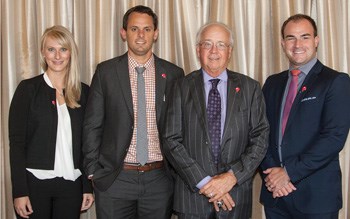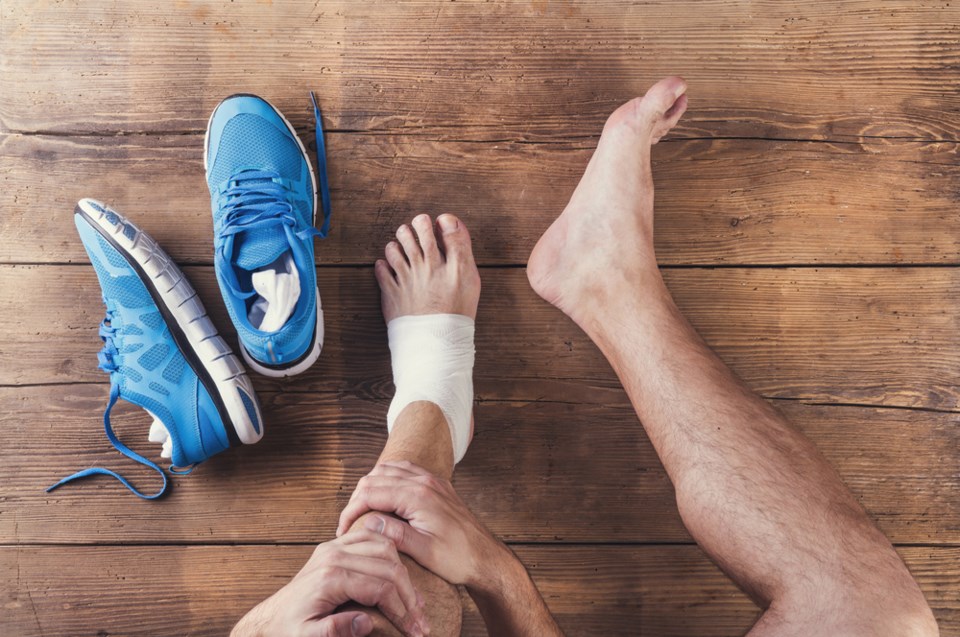Judging by the dazzling Alabama Crimson Tide S.E.C. football championship ring he wears, Dr. James Andrews loves football. He loves all sports. What he doesn’t like is seeing athletes get injured, especially when they involve young athletes.
“Over 30 million students participate in youth sports; 3.5 million will be treated over the course of a year,” Dr. Andrews told participants at the Youth Sports Injury Prevention Roundtable sponsored by Children’s Health on August 27.
What’s more alarming, he reported, is that kids are increasingly being treated for adult-type injuries, and injuries are continuing to increase seven to 10 fold. Why is this happening now? Dr. Andrews stated two main risk factors: fatigue and specialization.

“The #1 common denominator for injuries is fatigue,” he said, offering this example. A kid pitching with arm fatigue increases the risk of injury 36-fold. That is a 3,600 percent increase in risk of injury!
Secondly, specialization in a single sport has adolescents training like professional athletes, and their bodies are not ready for that. By playing one sport year-round, the intensive training and time involved put too much strain on developing children.
Doctors are seeing a lot of girls with hip and elbow injuries from gymnastics, soccer, basketball, and other sports. In fact, girls outnumber boys 7-to-1 in regards to ACL injuries sustained while playing soccer.
A renowned orthopedic surgeon, Dr. Andrews has treated a long list of famous athletes, including each of the Dallas Cowboys “Triplets,” Troy Aikman, Michael Irvin, and Emmitt Smith. But in recent years, he noticed a trend of kids requiring surgeries that typically only adults needed, like Tommy John surgeries. He knew something had to be done.
Today his focus is on prevention. Andrews is a strong advocate for the STOP (Sports Trauma and Overuse Prevention) program, which stresses the need to curtail overuse sports injuries in children. Pitch count is one way to limit exposure to possible injury. Teaching proper techniques is also vital, as are other precautions like warming up, stretching, hydration, and proper physical fitness.
The doctor also encourages kids to play different sports during the year, citing Jordan Spieth as an example. Before he was a pro golfer, Spieth was a school quarterback, pitcher and point guard. He was first an athlete, then a professional golfer.
During the roundtable discussion moderated by Children’s Medical Center Plano Administrator Michael Wiggins, participants brought up other issues including the pressure on student athletes to make select, travel teams. The competition is so rigorus and the time commitment so consuming, that many of the athletes forgo playing for their school teams. Families are willing to make the sacrifice because college scouts look to these elite teams as pipelines to their college teams. One exception seems to be high school football.
Gerald Brence, PISD Athletic Director and former Plano Senior High School football coach, said the district’s football programs continue to grow and attract college scouts. And, agreeing with Dr. Andrews’ point, Brence commented that some of the best players he has ever coached played more than one sport.
When it comes to safety, the former football coach said player safety is a priority for Plano ISD coaches, and it begins with teaching proper techniques.
“Everybody recognizes the concussion problem,” he said. “Coaches are doing everything they can to prevent head injuries. The first thing is teaching proper tackling techniques. A long time ago, we taught to lead with the head when making a tackle. Obviously that has changed.”
Brence added that trainers play a key role in spotting injuries early on and getting those players out of the game and tended to.
If a player does sustain an injury, Dr. Andrews said proper rehabilitation is key. “I’ve said a thousand times, the most important part of sugery is the rehabilitation. It’s more important than the actual surgical procedure itself.”
Dr. Andrews is now teaming up with Children’s Health on their new pediatric-focused orthopaedic and sports medicine program. The Children’s Health Andrews Institute is being developed on the Children’s Medical Center Plano campus.
Orthopedic physicians Kate Bauer, M.D., Chris Redman, M.D., and Dustin Loveland, M.D. are seeing patients now. Construction of the 96,000-square-feet facility is expected to be completed in 2017.
In a light-hearted moment, Dr. Andrews shared that his six kids played sports, got injured, and he even treated some of them. “But now as a grandfather, I am a nervous wreck when my grandkids jump off the furniture!”
He hopes that grandparents, parents, coaches and players take prevention seriously, and injury rates are the only things taking a tumble.




